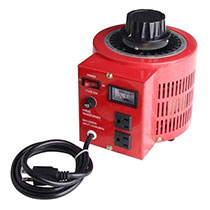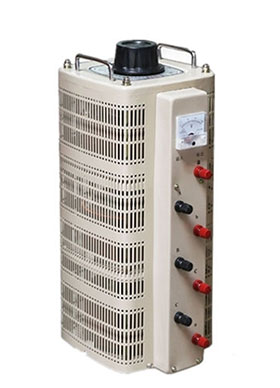Voltage Regulator Operation and Maintenance Tips
Thu, Apr 14 by ATO.com
In industrial electricity and household electricity, in order to use electricity safely and ensure the safety of people's property, we must use power conditioning equipment in the process of power transmission, and the voltage regulator is one of them. It can adjust the voltage of our daily electricity consumption, so that the power supply voltage can meet the requirements of our machinery and equipment. Voltage regulators are widely used in the automotive industry, energy-saving lighting, machinery and equipment, electric furnace industry, chemical industry, glass industry.
In this article, we will analyze the precautions for the use and maintenance of the regulator.
- The regulator and control box must be well grounded for safety.
- The installation site has no gas, vapor, dust, dirt, chemical deposits and other explosive and aggressive media that seriously affect the insulation of the regulator. Without severe vibration and bumps, when moving the regulator, do not use the handwheel, but use the handle or lift the entire product to move.
- For a newly installed or long-term unused voltage regulator, a 500-volt megohmmeter must be used to measure the insulation resistance of the coil to the ground before operation, and it can be used safely when the value is not less than 5 megohms, otherwise it should be heat-baked. The heat-drying treatment method can generally use the charged drying method or send it to the drying room for drying. After drying, check whether the fasteners are loose, and tighten them if they are loose.
- When using, it should be noted that the output current does not exceed the rated value, otherwise it will cause the product to burn out. During the test, the boosting speed should not be too fast, and the sudden full-voltage power-on or power-off should never be allowed.
- When using, the handwheel should be rotated slowly and evenly to avoid damage to the brushes or sparks. The use of the voltage regulator should be checked frequently. If the brushes are found to be excessively worn or damaged, the brushes of the same specification should be replaced in time, and the handwheel should be rotated several times under the brushes with a zero-size sandpaper pad to grind the bottom surface of the brushes. Flat and good contact. can be used.
- The surface of the coil in contact with the brush should be protected and cleaned frequently, otherwise it is easy to increase the friction spark and burn the surface of the coil. If you find that there are black spots on the surface of the coil, you can wipe it with cotton yarn with a little alcohol (90%) until the surface spots are removed.
- The regulator should be kept clean, and no water droplets, oil stains, etc. should fall into the regulator. The voltage regulator must be periodically powered off to remove the accumulated dust inside.
- When doing a high-voltage test, two or more people must participate, and the division of labor should be clearly defined, and the method of contact between them should be clearly defined.

- In the process of boosting or withstand voltage test, if the following abnormal conditions are found, the pressure should be lowered immediately, the power supply should be cut off, the test should be stopped, and the test should be carried out after finding out the cause. The pointer of the voltmeter moves very much: It is found that the odor and smoke of the insulation are burned; There is an abnormal sound in the tested product.
- During the test, if the test product is short-circuited or faulty, the overcurrent relay in the control box of the oil-immersed high-voltage test transformer will work. At this time, return the voltage regulator to the zero position and cut off the power supply. The test sample can be taken out.
- When conducting a capacitance test or a DC high voltage leakage test, after the test is completed, lower the voltage regulator to zero and cut off the power supply. There is a risk of electric shock due to the potential in the capacitor.

